Are you new to rock climbing and want to learn all the rock climbing terms? Learning a few basic rock climbing terms will allow you to understand how to rock climb, how the rope systems work, and much more!
Top Rope Climbing
Also known as top roping or TR, this is the most basic and safest (lowest inherent risk) way to go rock climbing! The rope is already attached, or anchored, to the top of the rock. This way the person holding the rope (the belayer) can keep the rope tight as the climber scales the route (the path up the rock). The rope is tied to the climber’s harness.
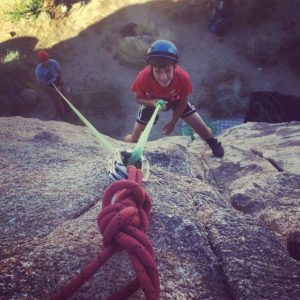
Bouldering
Bouldering refers to climbing on boulders which are generally small enough not to warrant the use of a rope. Bouldering gear often consists of crash pads (portable cushions to fall on), rock climbing shoes, and chalk to dry sweaty hands. The different paths up are called boulder problems. In the USA, boulder problems are graded on the “V Scale” according to difficulty. The easiest boulder problem is graded V0 (still hard!) and the pros are currently up to V17! Wow!
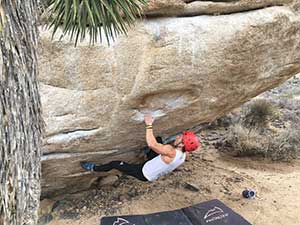
Lead Climbing
If you can’t safely access the top of the rock to attached your top rope (build an anchor), then you are going to have to lead climb! The climber starts climbing up the rock and needs to clip his/her rope to the rock while climbing. This involves climbing above your clipping point, which translates to increased fall potential. An average lead climbing fall (or whipper!) can be 10-20 feet, or even more! Yikes!
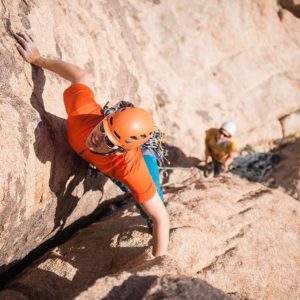
Scrambling
Scrambling isn’t climbing, but it’s not hiking either. It’s something in between. It’s moving through rocky terrain which is too easy to warrant the use of a rope. Think of hiking through a boulder field where you might need to use your hands a bit. The old Mountaineering Grading System referred to scrambling as “3rd Class.” When you want to use a rope, you’re probably in “5th Class“, which is why the Yosemite Decimal System starts with a “5”. For example, “5.10c“.
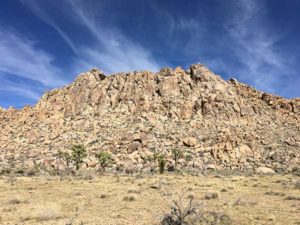
Rappelling
Rappelling is when you go down the rope and you’re in control of your own descent. A rappeling device, often attached to the rappeller’s harness with a carabiner provides enough friction on the rope so that the rappeller can control their downward speed. With rappelling, take it slow.
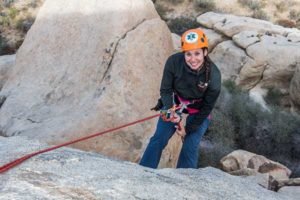
Belaying
A very old term taken from sailing, belay means “to tie off a rope.” In rock climbing, belaying is the act of holding the rope for your climbing partner. There are various belay devices that climbers use to secure the rope. The ATC and Grigri are perhaps the two most popular and common belay devices.
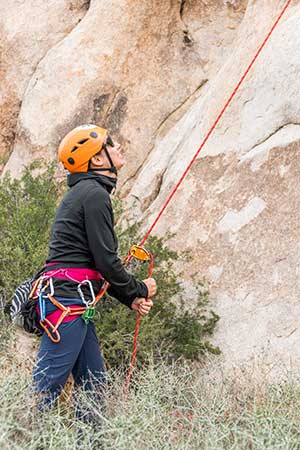
Anchor
A rock climbing anchor is what attaches a climber’s rope to the rock surface. When a climber is building the anchor, there are certain principles that must be followed. One such principle is strength: a good climbing anchor should hold over 25KN (5600 pounds)!

Slab
A slab is a smooth piece of rock that has a low angle. Slabs are not vertical or overhanging. Even though there are few-to-no hand or footholds available, the low angle of the slab provides just enough friction for a climber’s sticky-rubber shoes to propel the climber upward.
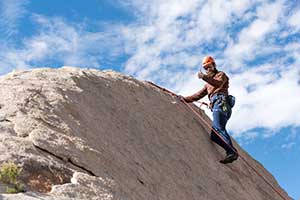
Crack Climbing
Cracks are commonly found in many different rock types, and make great climbing routes for rock climbers. Sometimes the crack affords hand and footholds, and other times climbers squeeze and wedge their body parts inside the crack. This is known as jamming.
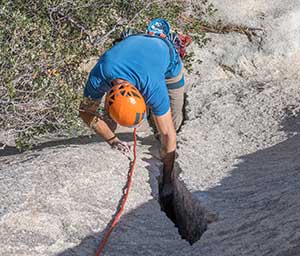
Face Climbing
Face climbing generally refers to scaling vertical rock faces without major cracks or ledges. Think of a sheer wall with small edges for hands and feet. This is very similar in style to climbing at the indoor gym.

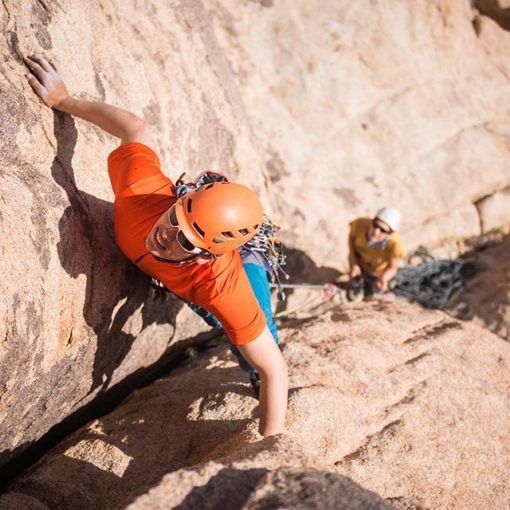
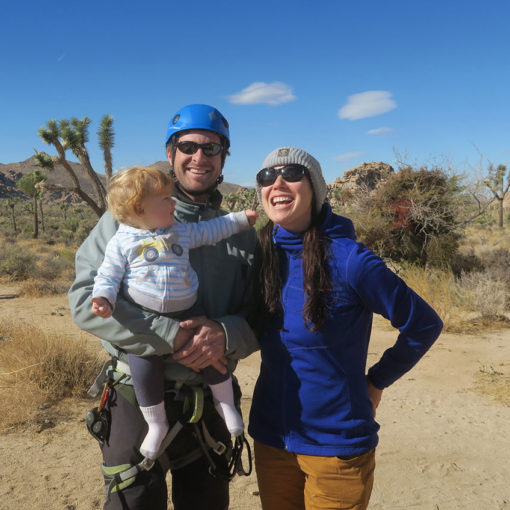


One thought on “Beginner’s Guide To Rock Climbing Terms”